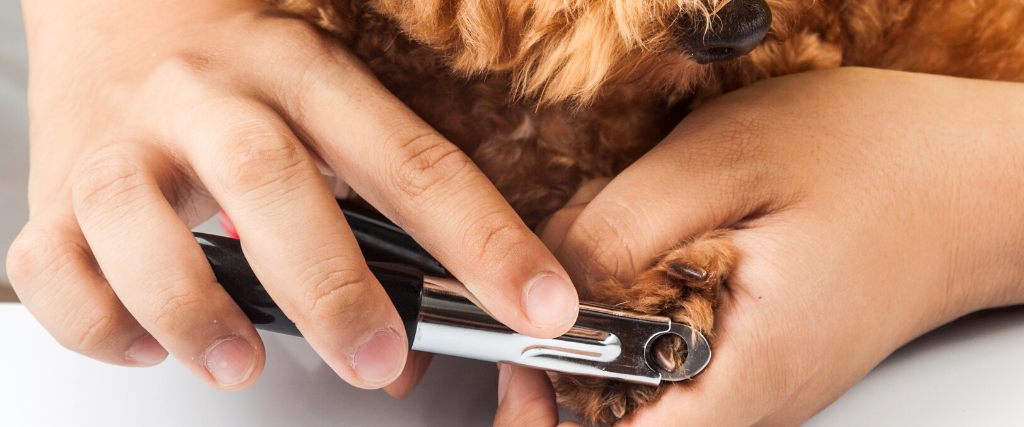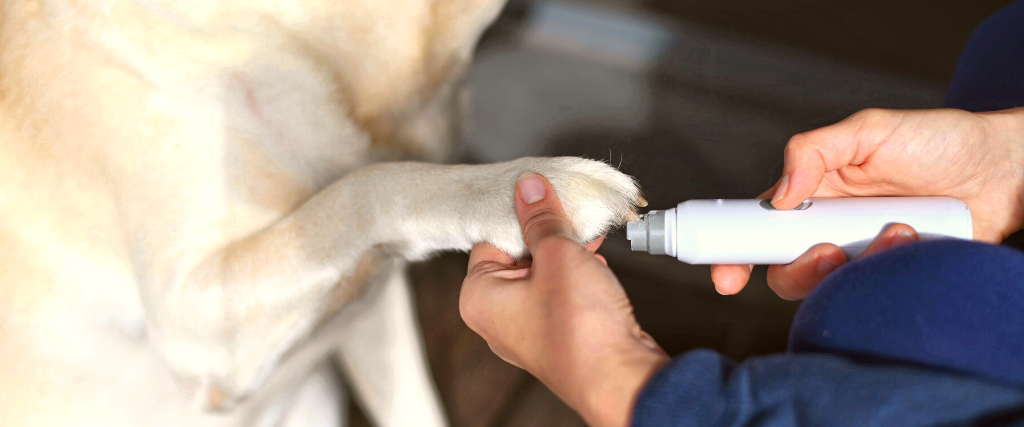Caring for a dog's nails is often overlooked until a scratch during playtime reminds you they're overdue for trimming. Regular nail trimming is important, as poor nail maintenance can lead to cracking, splitting, or breakage. As explained by the American Kennel Club, any of these scenarios could mean discomfort for your dog.
How to Trim Dog Nails
A little-known fact is that your dog's weight should rest entirely on the pads of their paws, so if you hear clicking when they walk across a wood or tile floor, that's a warning their nails are too long.
To trim your dog's nails:
- Place your thumb on the top of the toe and your forefinger on the pad and gently extend the nail.
- Place the nail trimmer over the nail. The cut blade should be parallel to the bottom of the pad. Rotate the trimmer's blade up about 30-45 degrees and cut the nail.
- Make several small cuts to avoid damaging the quick. Once you approach the quick, you will notice a small circle in the center of the nail--this is when you stop cutting.

Tips for a Smooth Process
Nail trimming can be a daunting process, especially with young, active dogs that don't want to sit still for more than a few seconds. Take some time to prepare for the trimming to ensure it's a smooth process, as a negative experience will only complicate the process in the future when your dog sees the trimmers.
To make the trimming process easier:
- Train your pet to stand quietly at an early age so they respond to the command when you need to trim their nails.
- Choose a time to trim nails when your dog is tired, such as after a walk or playtime.
- Purchase a nail trimmer based on your comfort. Scissor clippers are the most common and feature an extended grip that leverages your hand's force to cut through the nail. Guillotine clippers are another option, which feature a hole you place your dog's nail into and a blade that cuts it using manual force. Groomers consider guillotine clippers riskier since it's difficult to gauge how much of the dog's nail you're trimming.
- Don't attempt to clip a nail unless your dog is perfectly still.
- Understand where the "quick" begins, which is the vascular part of the nail. Accidentally cutting the quick will make it bleed.
Grinding Versus Trimming
Some dog owners prefer grinding over trimming. Nail grinders feature a rotating head that grinds the nail down and is considered the less stressful option for dogs since it's subtle and files the nail down, versus a sudden nail clip. It also smooths the nail at the end, eliminating the jaggedness typical of clippers. The downside of a nail grinder is the noise, which can scare some dogs.
When deciding between a nail trimmer and a grinder, consider your dog's personality. A skittish dog fearful of noises likely won't do well with a grinder, while a mellow dog who doesn't react easily to loud noises will probably prefer a grinder.

Don't Panic if they Bleed
Bleeding from nail trimming is a possibility and happens when the nail is trimmed too much, and the quick is cut. It is not serious, and the bleeding can be stopped quickly in a few different ways.
To stop accidental nail bleeding during nail trimming:
- Apply pressure on the nail for at least 30 seconds
- Use a styptic pencil or styptic powder applied with a damp cotton ball or Q-tip
- Put cornstarch on the end of the affected nail
Hill's Pet Nutrition offers more details on styptic powder, including how to use it, remove it, and safety measures.
If you are nervous about trimming your dog's nails, groomers offer this service, and many automatically trim nails as part of the grooming process. Contact us to learn more about trimming your dog's nails if you do it at home.
